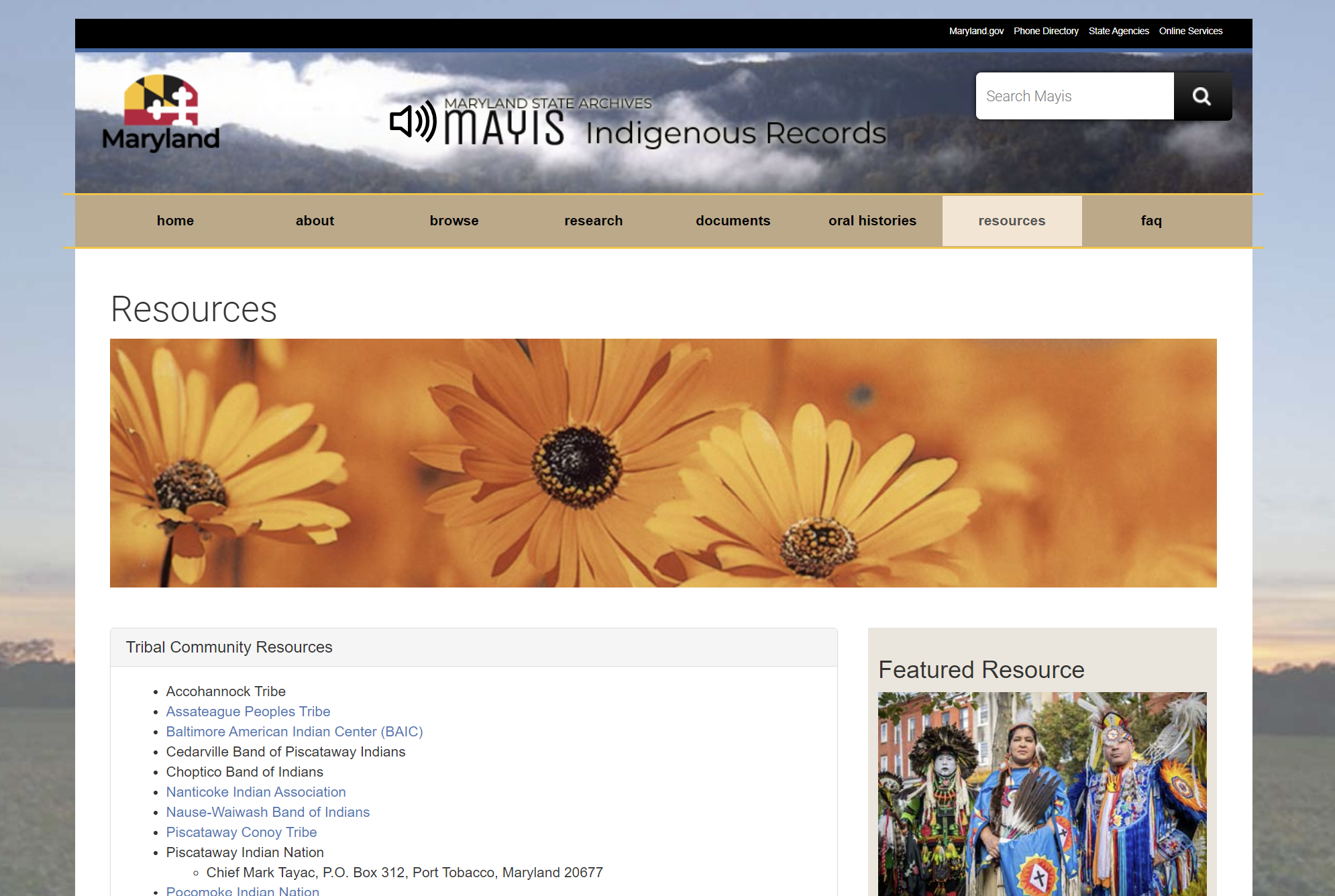Mayis Indigenous Records

The Mayis Indigenous Records are an essential resource for education, preservation, and advocacy, highlighting the importance of Indigenous perspectives in understanding Maryland’s history and culture.
Even beyond the sources in the Mayis collection, most older sources are from a white perspective, including many of the historical newspaper articles in the kits. As you help students to analyze the sources, make them aware of how this limited perspective and bias can shape the stories presented. It doesn’t mean the sources don’t have value, but they only have value in showing us one side of the story. The sources can help us understand what white people in the past knew, thought, and felt about Indigenous people. Often this meant stereotyping and treating Indigenous people wrongfully or as a curiosity. These are not positive parts of Indigenous history, but they can help us better understand the arc of the story of Indigenous people and how it shaped Indigenous culture today.
As you explore older historical sources, particularly those from the Mayis Indigenous Records, you will notice a variety of spellings for the names of different Indigenous nations, tribes, and bands. The English colonists who collected these records wrote those names as they believed they should be spelled, based on English phonetics. Often, the transcriptions differed from person to person. The Mayis collection includes all possible spellings found in the records.
In the following video, Maria Day from the Maryland State Archives and Drew Shuptar-Rayvis of the Pocomoke Indian Nation discuss how students and teachers can take an active role in learning about history. Sarah Mason also reflects on her responsibility when it comes to teaching Indigenous culture and history.
The Impact of Words










